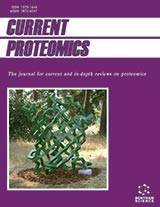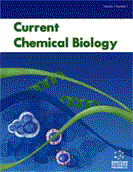Abstract
The breadth of expression in singing depends on fine control of physiology and acoustics. In this review, the basic concepts from speech acoustics, including the source-filter model, models of the glottal source and source-filter interactions, are described. The precise control, the extended pitch range, the timbre control and, in some cases, the uses of alternate phonation modes all merit further attention and explanation. Here we review features of the singing voice and the understanding that has been delivered by new measurement techniques. We describe the glottal mechanisms and the control of vocal tract resonances used in singing. We review linear and nonlinear components of the voice and the way in which they are measured and modelled and discuss the aero-acoustic models. We conclude with a list of open questions and active fields of research.
Keywords: Singing voice, speech acoustics, vocal folds, vocal tract, source-filter interaction, Inverse Filtering, High-Speed, –, Endoscopic Visualisation, Stroboscopy, Electroglottography, Harmonic Singing, Resonance Tuning
Current Bioinformatics
Title: Analysing and Understanding the Singing Voice: Recent Progress and Open Questions
Volume: 6 Issue: 3
Author(s): Malte Kob, Nathalie Henrich, Hanspeter Herzel, David Howard, Isao Tokuda and Joe Wolfe
Affiliation:
Keywords: Singing voice, speech acoustics, vocal folds, vocal tract, source-filter interaction, Inverse Filtering, High-Speed, –, Endoscopic Visualisation, Stroboscopy, Electroglottography, Harmonic Singing, Resonance Tuning
Abstract: The breadth of expression in singing depends on fine control of physiology and acoustics. In this review, the basic concepts from speech acoustics, including the source-filter model, models of the glottal source and source-filter interactions, are described. The precise control, the extended pitch range, the timbre control and, in some cases, the uses of alternate phonation modes all merit further attention and explanation. Here we review features of the singing voice and the understanding that has been delivered by new measurement techniques. We describe the glottal mechanisms and the control of vocal tract resonances used in singing. We review linear and nonlinear components of the voice and the way in which they are measured and modelled and discuss the aero-acoustic models. We conclude with a list of open questions and active fields of research.
Export Options
About this article
Cite this article as:
Kob Malte, Henrich Nathalie, Herzel Hanspeter, Howard David, Tokuda Isao and Wolfe Joe, Analysing and Understanding the Singing Voice: Recent Progress and Open Questions, Current Bioinformatics 2011; 6 (3) . https://dx.doi.org/10.2174/157489311796904709
| DOI https://dx.doi.org/10.2174/157489311796904709 |
Print ISSN 1574-8936 |
| Publisher Name Bentham Science Publisher |
Online ISSN 2212-392X |
 7
7
- Author Guidelines
- Bentham Author Support Services (BASS)
- Graphical Abstracts
- Fabricating and Stating False Information
- Research Misconduct
- Post Publication Discussions and Corrections
- Publishing Ethics and Rectitude
- Increase Visibility of Your Article
- Archiving Policies
- Peer Review Workflow
- Order Your Article Before Print
- Promote Your Article
- Manuscript Transfer Facility
- Editorial Policies
- Allegations from Whistleblowers
Related Articles
-
Patent Annotations
Recent Patents on CNS Drug Discovery (Discontinued) The Contribution of Oxazolidinone Frame to The Biological Activity of Pharmaceutical Drugs and Natural Products
Mini-Reviews in Medicinal Chemistry Ventricular Arrhythmias in Patients with Obstructive Sleep Apnea
Current Cardiology Reviews Toxins Targeting Voltage-Activated Ca<sup>2+</sup> Channels and their Potential Biomedical Applications
Current Topics in Medicinal Chemistry Identification of Attention Deficit/Hyperactivity Disorder in Children Using Multiple ERP Features
Current Bioinformatics Prospects for A Schistosome Vaccine
Current Drug Targets - Immune, Endocrine & Metabolic Disorders Overview of Experimental and Conventional Pharmacological Approaches in the Treatment of Sleep and Wake Disorders
Current Topics in Medicinal Chemistry Small and Hungry: MicroRNAs in Micronutrient Homeostasis of Plants
MicroRNA Caregiver Burden in Fragile X Families
Current Psychiatry Reviews Immunomodulation in Trichinellosis: Does Trichinella Really Escape the Host Immune System?
Endocrine, Metabolic & Immune Disorders - Drug Targets Herbal Insomnia Medications that Target GABAergic Systems: A Review of the Psychopharmacological Evidence
Current Neuropharmacology Discovery of MAO-B Inhibitors - Present Status and Future Directions Part I: Oxygen Heterocycles and Analogs
Mini-Reviews in Medicinal Chemistry HIV-1 RT Nonnucleoside Inhibitors and Their Interaction with RT for Antiviral Drug Development
Infectious Disorders - Drug Targets Experiments on Analysing Voice Production: Excised (Human, Animal) and In Vivo (Animal) Approaches
Current Bioinformatics Co-Enzyme Q10 to Treat Neurological Disorders: Basic Mechanisms, Clinical Outcomes, and Future Research Direction
CNS & Neurological Disorders - Drug Targets Amantadine Might be Used as a Drug for SARS-Cov-2 Treatment?
Coronaviruses A Proteomics Study of the Subacute Toxicity of Rat Brain after Long- Term Exposure of <i>Gelsemium elegans</i>
Current Molecular Pharmacology β-Barrel Membrane Bacterial Proteins: Structure, Function, Assembly and Interaction with Lipids
Current Protein & Peptide Science Meta-Analysis of Anticancer Drug Structures - Significance of Their Polar Allylic Moieties
Anti-Cancer Agents in Medicinal Chemistry Link of COVID-19 and Neurodegenerative Disorders
CNS & Neurological Disorders - Drug Targets

















.jpeg)








